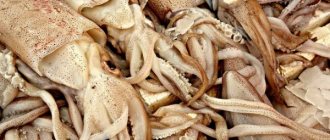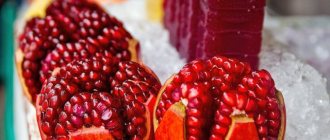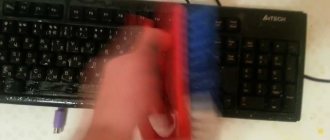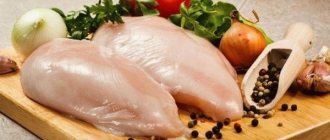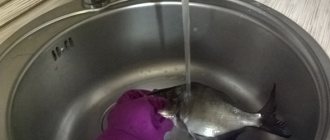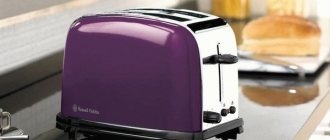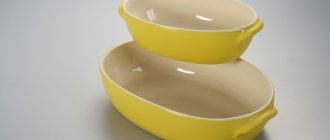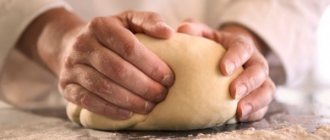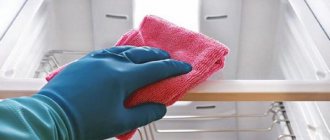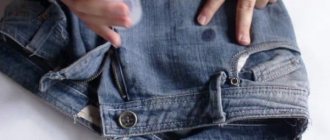General rules for washing dishes
What to do before washing:
- Remove any leftover food from the dishes. This will protect the sewage system from unnecessary pollution, which you will then have to deal with.
- If food particles have dried on the plate or burned in the pan, soak the dishes in water for a quarter of an hour or an hour, depending on the degree of contamination.
- Sort the dishes by type, size, material. Wash glass separately from spoons and forks, stainless steel - from ceramics and enamel pans.
Washing
If you have a lot of dirty dishes, wash them in a large bowl rather than in the sink. Take detergents and cleaning products in the form of gel, paste or powder (for different types of dishes). Wear rubber gloves or use products containing extracts to protect your hands.
Wash glassware first - it's cleaner. Let the plates get wet, then they will be easier to process. Next, wash spoons, forks, and knives. After them, take on large-sized dishes, pots, pans.
The next stage is rinsing the washed dishes. It is better to do this under running water. If this is not possible, rinse more thoroughly so that no particles of detergent remain on the dishes - they all contain substances that are unsafe for health. After completing the main process, dry the dishes by placing the utensils on a drying line or wiping them with a towel.
By hand or by machine
Of course, you can clean your dishes without any extra hassle using a dishwasher.
But some items, even if you have equipment, will have to be washed with your own hands. Do not put in the dishwasher:
- Cast iron products: These require more thorough cleaning.
- Knives: will become dull quickly.
- Wooden dishes: deformed.
- Crystal: May cause scratches.
- Most items related to non-stick cookware: will lose the basic quality for which they were purchased.
- Copper products: will change color.
- Plastic, except for specialized hard plastic.
- Tableware with gold plating: the plating may come off.
Stages of washing dishes
Each stage of dishwashing needs to be optimized. If you use some life hacks in small things, you can save a lot of time in the end.
Soak. It is not enough to dump all the dishes in the sink and turn on the hot water. Yes, the leftover food will not dry out, but after that you will be dismantling this mountain for a long time. Therefore, you need to soak the dishes correctly. Believe me, it's not that difficult.
All spoons, forks and knives should be left in a large bowl and filled with warm water. Place the dishes in a basin and also fill with water. Add a drop of detergent and leave for ten to fifteen minutes. During this time, the contamination will disappear, and the water will not have time to acquire an unpleasant odor.
You can also soak it in the sink, but if you do it often, then you will have to carry out long procedures to clean it. Occasionally, you can close the sink with a stopper and fill the dishes in it with warm water and the product. After soaking, wipe the dishes with a sponge and rinse.
pexels.com
The washing up. Place dirty dishes not in the sink, but in a basin next to it. Apply detergent to the sponge. Now you need to take out the plate one by one, wipe it with a sponge on both sides and put it in the sink. There is no need to turn on the water; at this stage you will not need it (at the same time you will save money). When all the dishes are in the sink, turn on the water. Rinse each device under a small stream, wipe with a towel and send to dry.
Remember that dishes need to be washed one at a time. You should clean cutlery first, then cups and glasses. Then the plates, and after them, lastly, the pots and pans.
How to clean enamel cookware
Mustard powder removes grease from enamel dishes well. It is poured onto a sponge, rubbed onto the surface and washed off with clean water. You can also dilute the powder with water, make a paste, apply it to the products, and rinse off after a while. Powdered mustard also does a great job of removing the remains of burnt food at the bottom of pans.
The enamel pans, beloved by housewives, have one drawback: the food in them often burns and you have to think about how to clean off the carbon deposits. To prevent food from sticking to the bottom of enamel dishes, it is not recommended to boil milk in it, cook porridge (especially dairy), or stew meat and vegetables.
If trouble does occur, do not under any circumstances clean the bottom and walls with a wire brush, do not pour cold water into a still hot pan, and do not scrape the burnt part with a knife.
Salt and soda
Here's what you can do: cover the affected bottom with salt or soda, pour in a small amount of water so that the substance dissolves in it, and leave it like that overnight. The next day, boil the solution for 20 minutes, drain off the remaining residue and wash the bottom with a sponge.
Vinegar
You can use highly diluted vinegar by pouring it into a burnt pan and leaving it for several hours. After this, the carbon will easily fall away from the bottom.
Coca Cola
Yellow limescale often forms in enamel cookware. We use Coca-Cola. Pour the drink into a container overnight, then heat and boil for a couple of minutes. The pan will shine like new.
Citric acid or whey
The result will be no worse if we use citric acid or whey. We use the same recipes to remove dark spots on the walls and bottom of pans in which compotes are often cooked.
How to wash dishes with pleasure
The following tips will help turn the process of washing dishes into an enjoyable experience that will fly by.
- We follow the one soap sponge rule. We apply washing liquid to it, foam it and clean the kitchen utensils until the sponge stops foaming. Then we take a break and do other household chores. By breaking a long process into several stages, we psychologically perceive it much simpler.
- We use beautiful tools. We surround our “workplace” with beautiful sponges, original brushes, use a product with our favorite scent and any other items that lift our spirits. This will make the process of washing dishes much more enjoyable.
- Don't forget about rubber gloves. They protect hands from the negative effects of chemical components of detergents, and also prevent contact with grease and food residues on plates and other objects.
- We listen to music or humorous episodes. This will help lift your spirits and take your mind off the process.
How to clean aluminum cookware at home
It is not recommended to wash aluminum cookware in the dishwasher, as this will cause permanent darkening. But 9% vinegar won't hurt.
Soak a kitchen sponge in it and wipe the dishes from all sides. If we are talking about a saucepan, then the vinegar solution is simply poured inside and left for several hours. Then they drain it and wash the pan itself with hot water.
How else to clean aluminum cookware:
- Laundry soap dissolved in water with the addition of ammonia (water - one liter, other ingredients - a tablespoon).
- Coca-Cola or other soda. After steeping, wash with soap and water or dishwashing detergent.
- Cleaning from blackness is carried out using mustard powder, vinegar and salt. You will need a tablespoon of each substance. The mixture is applied to the walls of the dish and after a quarter of an hour, after thoroughly wiping, it is washed off with hot water.
- In the summer, try boiling fresh sorrel in a blackened aluminum pan. After half an hour of intense heating, drain the broth and rinse the vessel.
- Fermented milk products and cucumber pickle have proven effective in removing blackness from aluminum. They are poured into a container overnight, poured out in the morning and no black spots are found!
- A “Sanitary” solution based on oxalic acid is also successfully used to clean aluminum, but only on the outside. And inside you can use citric acid. You will need 2 tbsp. l. per liter of water. The solution is boiled in a container for 20 minutes, then washed in running water.
How to clean carbon deposits from aluminum cookware
Let's try to remove it using:
- halves of an apple or lemon;
- onion broth (boil several onions cut into pieces for half an hour);
- boiling in a soapy solution in a larger enamel container;
- fine salt in the form of a paste.
When the carbon deposits are strong, add 1 tbsp to soapy water (one-third of a piece of laundry soap per three liters of water). spoon of PVA glue and boil for about an hour. Then wash with dish gel. Glue can be replaced with ammonia. Another way: cover the carbon deposits with tooth powder and wait a few hours. After this, soften with water and scrape off with a wooden spatula. Then wash as usual.
Minuses
As you know, a coin has two sides. On the one hand, soaking increases the efficiency of cleaning dishes, but on the other hand, it can cause damage.
We recommend: How I made a water filter jug from a regular plastic bottle in 5 minutes
Let's look at the arguments against:
- Cracks and deformation of the walls of pots and pans. Many people don’t think twice about it and place the dishes in water immediately after removing them from the stove. Products often deteriorate due to temperature changes.
- Destruction of the protective layer. Some types of cookware have a layer that prevents burning and rust. For example, cast iron products have an oil (fat) coating. Soaking destroys it, and food begins to stick and burn during cooking.
- Corrosion. Cast iron deteriorates from prolonged exposure to water. And even stainless steel can rust if it is not of very good quality.
- Reproduction of harmful microorganisms. A moist environment with food residues is fertile ground for the proliferation of infections and molds.
To wash burnt dishes, you need to sprinkle baking soda on the affected areas and fill it to the top with warm water. In this form it should stand for 2 hours. Then you should walk along the walls with a brush. You will see how easily the carbon deposits come off.
How to clean stainless steel cookware
Such dishes are often found in modern kitchens. It is convenient, practical, wear-resistant. But when it gets dirty, it requires a lot of effort to restore its former attractive appearance.
In order for the chromium contained in stainless steel to perform a protective function against rust and difficult stains, the dishes must be clean. Regular care will extend the life of the utensil.
Avoid cleaning stainless steel cookware in the dishwasher. Use a sponge and gel. After washing, dry with a towel. Air drying will only add stains. Products with abrasives, hard ones, especially metal scourers are unacceptable.
How to clean stainless steel
Soda
Particularly effective for removing fat. After the main wash, the surfaces are sprinkled with soda powder and allowed to stand for an hour or two. Then wipe with a dry cloth.
Special product for cleaning stainless steel
They cope with stubborn stains. First, heat the pan in hot water, then apply the product. After a quarter of an hour, remove the dirt, rinse the pan and wipe dry.
Severe burn
We combat serious burns by heating water in a container until it boils. Turning off the stove, add salt without sparing and wait 2-3 hours. Drain the contents and remove the burnt material with a rag.
Milk burnt
Activated carbon will help if the milk is burnt. Grind the medicine into powder and apply to problem areas. Pour some water and wait for the coal to soften the burn.
Vinegar for cleaning stainless steel
Vinegar (not essence) is used to clean stainless steel cookware. Apply to a washcloth and wipe. Then wash with water. Lemon juice is used in the same way. Dissolve a tablespoon of the substance in a glass of water and wipe bowls, pots, and pans.
Scale and stains
When choosing how to clean stainless steel from scale and stains, think about office glue. In tandem with soda, it is able to remove old deposits. Pour 5 liters into a spacious container. water, add 100 grams of glue and half a standard pack of soda.
Dishwashing gel won't hurt either. We lower the cutlery. Boil the water with its contents for 20 minutes, cool without removing the dishes. Rinse.
Coffee grounds will do a good job in cleaning stainless steel items. Placed on a sponge, wipe the dishes and then rinse thoroughly.
To get rid of fingerprints and dried water stains, use glass cleaning spray. Spray and wipe with a lint-free cloth. To add shine, rub the dishes with potatoes cut into slices.
How to wash plates from yellow plaque in an unusual way
Yellowness on the dishes is traces of grease contamination. You can get rid of them using available means: soda (baking and soda ash), mustard powder, vinegar, lemon juice.
If scrubbing dishes and pots using a “primitive” method is undesirable, we recommend using chemicals: washing powder with bleach. After such exposure, the dishes will shine like new. Take equal parts powder and dry bleach. We dissolve them in a spacious container, where we lower the contaminated dishes for several hours. Wash the soaked plates with a sponge and rinse thoroughly under the tap.
Natural dishwashing detergents
Whether it is better to wash dishes with specialized chemicals or proven natural ones depends on preference. Housewives use so-called folk remedies for washing dishes no less often than store-bought ones. We have already talked about many of them. Let's add information.
Baking soda and hydrogen peroxide for cleaning dishes
Baking soda is safe, successfully fights grease, and absorbs odors. Peroxide disinfects, whitens and disinfects. Their “union” is a powerful cleaning agent for dishes, including burnt pots and pans.
The recipe is as follows: apply a mixture of peroxide and soda to the surface to be cleaned, leave for 20 minutes, and wash off with a foam sponge. By the way, the recommendation is relevant for both the stove and the oven. To remove a layer of carbon deposits from a frying pan, pour water into it, add soda powder, heat it, pour in a teaspoon of peroxide, bring to a boil, turn off the heat, let the water cool. We wash it off.
When the baking sheet burns, combine 4 tbsp. l. peroxide with 100 grams of soda powder and dishwashing gel, apply to the walls and bottom, wait half an hour. Then wash off with a sponge.
Baking soda and peroxide will help clean burnt enamel pans. The main thing is not to fill it with hot water. Cover the burnt bottom with warm water, add baking soda, soap shavings and peroxide. After half an hour, remove any remaining burnt residue.
How to wash dishes with soda if they are made of stainless steel
Dissolve baking soda in warm water, pour the solution into a saucepan, heat and boil for a quarter of an hour.
When people ask how to wash dishes without detergent, they don’t mean that you only need to use water. Baking soda sprinkled on foil, which, in turn, is placed on the bottom of a clean pan and diluted with water, will remove dark deposits on cutlery. You just need to boil them in a solution. The method is suitable even for bronze, cupronickel, silver devices. If there are small dark spots left, rub them with hydrogen peroxide.
Soda Ash
Soda ash is also successfully used for washing dishes. It is recognized as an environmentally friendly substance, does not leave traces of its presence on dishes, and is more effective than food. It's easy to work with. After wetting the dishes, cover the surfaces inside and outside with soda ash, leave for a short time, then wipe. Cutlery is also cleaned. To remove old fat, dissolve 3-4 tbsp in a liter of water. spoons of soda ash and soak the dishes. Then, of course, rinse thoroughly with clean water.
Lemon juice with additives
A proven product that successfully cleans dishes is a mixture of 150 ml of diluted vinegar, two tablespoons of glycerin, soap shavings, a teaspoon of starch and a tablespoon of lemon juice.
After mixing the composition, use it to clean any surfaces. You can use lemon juice alone, but only when removing minor stains. It is also the first assistant when you need to remove an unpleasant odor or wipe off traces of rust.
Wood ash
The ancient cleaning product is still in demand today because it is effective and absolutely harmless, so you can also wash children’s dishes. Ash is applied to dampened kitchen utensils, rubbed with a sponge and washed off.
Soap
People often ask whether it is possible to wash dishes with laundry soap. You can, because it contains natural ingredients.
There are no phosphates, no surfactants, dyes, flavors, or preservatives. And vegetable oils, sodium salts and fatty acids do not pose a health hazard. You can also wash dishes with liquid soap.
Wood ash
Ash will not only leave your dishes sparkling clean, but will also remove grease. For this method, only ash is used, which remains from burning wood, and not from burning various garbage.
Take clean wood ash from your grill and mix it with a little water to make a paste. You can use both hot and cold water. Apply the resulting product to a sponge or brush and start washing. Then rinse the dishes thoroughly under running water.
DIY dish detergent
Housewives often experience allergic reactions to purchased products. This is not surprising, because they consist of chemicals, sometimes unsafe.
You need to be more careful when using special products in homes with small children. Of course, you can find 100% natural, environmentally friendly products on sale. But they are expensive. Meanwhile, it is not difficult to prepare a safe detergent yourself. They have many advantages, but they also have disadvantages. Firstly, they are less effective than store-bought ones that contain potent ingredients. Secondly, they are quickly consumed.
Dishwashing liquid made from laundry soap
Required:
- a bar of laundry soap without additives;
- 2 liters of hot water;
- 5 tbsp. spoons of soda;
- 5 tbsp. l. mustard powder;
- 5-7 tbsp. l. ammonia.
The process is as follows: grind the dry bar of soap. Heat water in a saucepan and dissolve the shavings. When the solution has cooled, add mustard powder and water. The mixture should become homogeneous. Now we introduce ammonia. Mix everything again, pour into a glass jar, and close tightly. Can be used in a couple of hours.
With soap and soda
Compound:
- soap shavings (half a glass);
- a quarter pack of soda;
- 10-15 drops of essential oil;
- 250 ml boiling water.
Preparation: Dissolve the finished shavings in boiling water. Whisk until no lumps remain and foam appears, then cool. Add baking soda and stir. After this, add essential oil. Citrus aromas are most often chosen, but mint, eucalyptus and others are also good. You can use a blender to finish whipping the mass until it becomes an airy soufflé. Store in a closed plastic container.
Soap with glycerin
The composition in the form of a gel is safe, anti-allergenic, and also softens the skin of the hands, and will help remove dirt from any dishes. You will need laundry soap again. Let's add glycerin to it.
Dissolve the soap in a small container in a glass of hot water. By adding hot water, we achieve the desired consistency. Enter 10 tbsp. spoons of glycerin. Pour the resulting viscous liquid into a plastic bottle. You can also add flavoring. Washing dishes with homemade products is much more enjoyable.
Now you can easily and quickly wash away all the dirt from various types of dishes, without spending a lot of money on expensive chemicals.
